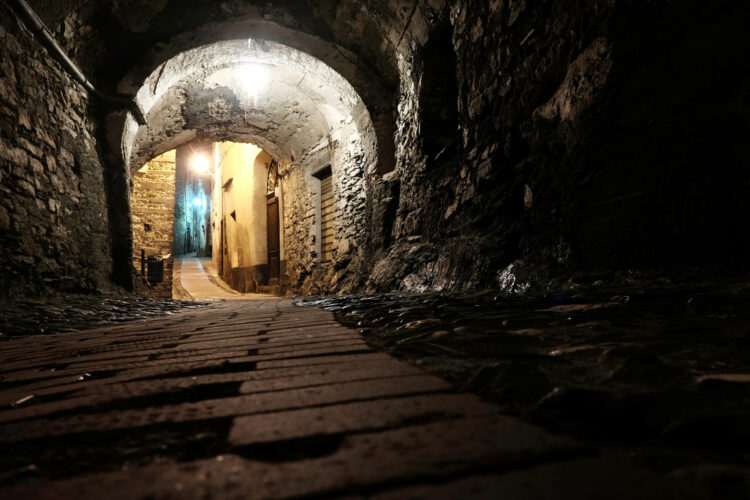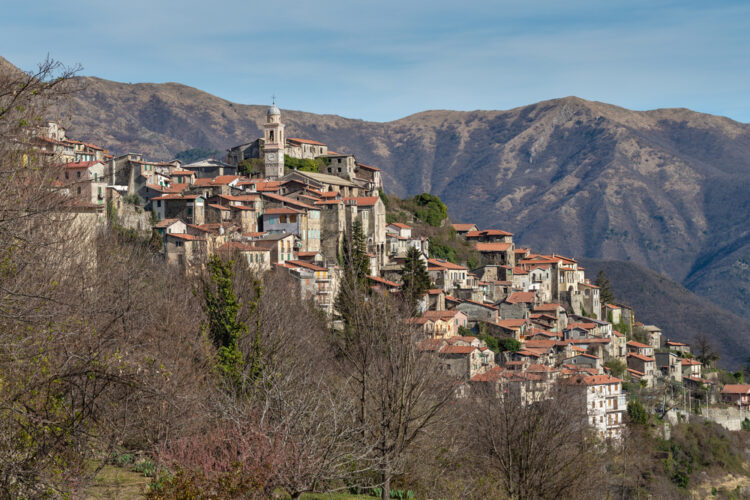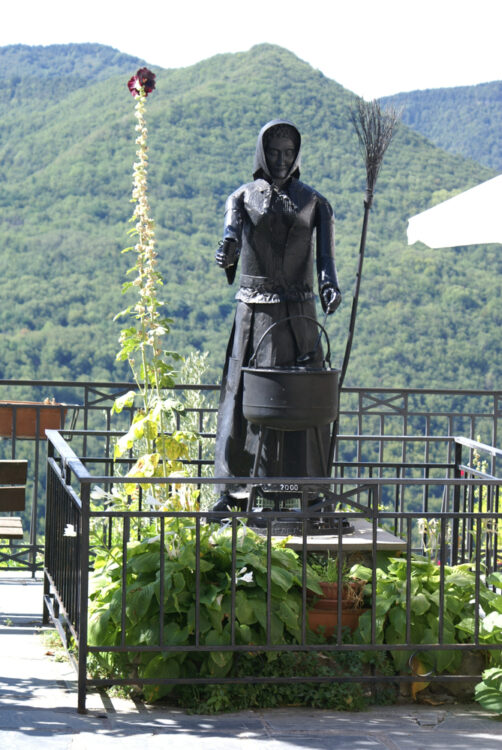Perched dramatically on a mountainside in Italy’s Liguria region, the medieval village of Triora, known as the “Salem of Italy,” has embraced a haunting history of dramatic, infamous witch trials. The town’s strategic position at 780 meters above sea level made it a crucial defensive outpost during medieval times. The village’s name derives from “Tria Ora,” meaning three mouths, referring to the three gates that once protected this fortress town. Its robust walls and commanding position earned it the nickname “Keys to the Alps,” as it controlled important trade routes between the Ligurian coast and Piedmont.
The village’s most notorious chapter began in 1587, when a severe famine struck the region. As crops failed and livestock perished, the desperate populace sought explanations for their misfortune. Local authorities, influenced by the Catholic Church’s Inquisition, directed their suspicions toward women who were believed to practice witchcraft. The ensuing witch trials of Triora are Italy’s most extensively documented witch persecutions. Court records reveal that approximately 30 women were accused of being “streghe” (witches), facing allegations of infanticide, cannibalism, and consorting with the devil. The accused were imprisoned in what is now known as the “Cabotina,” a dark cell carved into the rock beneath the village.

The inquisitors employed brutal torture methods to extract confessions, including the dreaded “strappado” – a technique that involved hanging victims by their arms tied behind their backs. Many of the accused died during imprisonment or torture, while others faced execution. The trials continued sporadically until 1589.
Like Salem, Massachusetts in the United States, modern Triora has transformed its dark history into a source of cultural and economic revitalization. Rather than hiding from its past, the village has thoughtfully incorporated these historical events into its identity, creating educational opportunities while honoring the memory of those who suffered.

The Museo Etnografico e della Stregoneria (Ethnographic and Witchcraft Museum) serves as the centerpiece of this historical interpretation. Housed in a renovated palazzo, the museum presents an examination of the witch trials, placing them within their historical context of religious persecution, social upheaval, and medieval superstition. Exhibits include period documents, torture instruments, and detailed explanations of 16th-century village life.
Today’s Triora remains remarkably well-preserved, with its medieval architecture largely intact. Narrow cobblestone streets wind between ancient stone buildings, many featuring traditional slate roofs and Gothic archways. The village has managed to maintain its authentic character while adapting to modern tourism. Local businesses have cleverly incorporated the witch theme into their offerings. Bakeries sell “Strega” cookies made from traditional recipes, while artisan shops offer handcrafted witch dolls and local handicrafts. The commercialization is generally done tastefully, maintaining respect for the historical events while supporting the local economy.
 The best-preserved medieval quarter in western Liguria demands thorough exploration. Key landmarks include the 12th-century parish church of San Bernardino, the remains of the castle (Castello), the ancient defensive walls and gates and the characteristic “caruggi” (narrow alleyways). The preserved prison cell where accused witches were held offers a sobering reminder of the trials.
The best-preserved medieval quarter in western Liguria demands thorough exploration. Key landmarks include the 12th-century parish church of San Bernardino, the remains of the castle (Castello), the ancient defensive walls and gates and the characteristic “caruggi” (narrow alleyways). The preserved prison cell where accused witches were held offers a sobering reminder of the trials.
Triora is famous for its bread, once so renowned it was mentioned in official documents of the Republic of Genoa. Local specialties include the traditional Triora bread, Pesto alla Genovese made with local herbs, white bean dishes, and local cheese and cured meats
Triora is best explored on foot, as many streets are too narrow for vehicles. Comfortable walking shoes are essential. The village’s elevation means weather can change quickly; bringing layers is advisable even in summer.
While day trips from the Italian Riviera are possible, staying overnight allows visitors to experience the village’s mysterious atmosphere after dark and enjoy spectacular stargazing opportunities. Several small hotels and B&Bs offer atmospheric accommodation in restored medieval buildings.
If possible, time your visit to coincide with one of Triora’s festivals:
– The Summer Witches’ Festival (August)
– The Medieval Festival (July)
– The Mushroom Festival (September/October)



